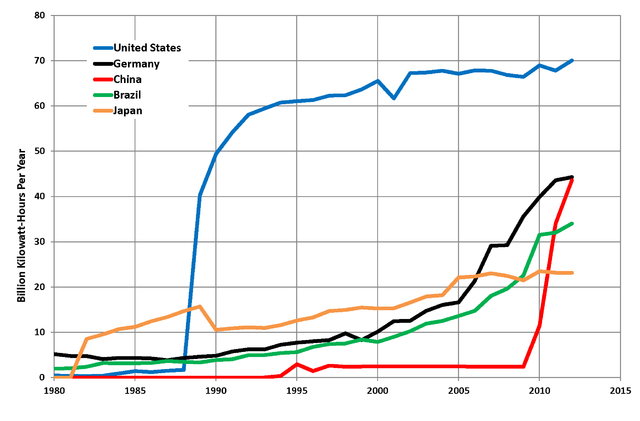
Biomass is the biological material derived from living organisms or recently living organisms and plants. Major part of the biomass community is of plants and woody material. Biomass can be directly burned for producing heat or can be converted to bio-fuel to produce heat, electricity and other forms of energy. Some of the examples for bio-mass are sugarcane molasses, straw, tree stumps, wood chunks, cow dung, poultry waste, Human municipal waste, corn etc. These can be suitably converted into varied forms of energy through thermal, chemical and bio-chemical methods.
Fact 1: A majority of the biomass energy source comes from wood namely forest residues like dead trees, branches, tree stumps, yard clippings and wood chips. Wood has been a common source of energy used by human beings over thousands of years to keep themselves warm and to cook food. Numerous types of plants and tress like miscanthus, switchgrass, hemp, corn, poplar, willow, sorghum, sugarcane, bamboo and trees like eucalyptus and palm oil have been used as Industrial biomass.
Fact 2: Plant biomass can be suitably selected based on high biomass yield per hectare and low input energy for growing. Wheat is one such plant biomass which yields 7.5–8 tonnes of grain per hectare and similarly straw yields 3.5–5 tonnes per hectare in the UK. Straw can be used to produce heat and electricity, whereas wheat grains can be used to produce liquid transportation fuels like bio-diesel and ethanol.
Fact 3: Another prominent category of biomass is from agricultural waste, human waste, animal waste and garbage. The landfills for garbage, agricultural waste and designed decomposing enclosures for human waste and animal waste like cow dung produce methane gas. This gas is also called as bio-gas and it can be used as fuel for cooking, heating and other purposes.
Fact 4: There is a great deal of research going on in algae based biomass production, because it is a non food source and can be developed at ten times the rate achieved in land based agriculture. On completion of harvesting it can be fermented to produce bio-fuels like ethanol, butanol, methane, bio-diesel and hydrogen.
Fact 5: Biomass utilization for energy production is considered ‘carbon neutral’. Which means that only that Carbon-dioxide is released to atmosphere that is consumed by the biomass source during growth. Again planting the biomass source will recycle Carbon-dioxide and the cycle goes on.
Fact 6: The U.S agricultural and forest product industries completely rely on biomass energy. Paper mill residue, lumber mill scrap and municipal waste act as the major biomass feed stocks for generating power. Biomass fuels like ethanol and bio-diesel are produced using corn grain and soy beans respectively in U.S.
Fact 7: New Hope Power Partnership is the largest biomass power plant in USA and North America and is located in Florida South Bay. It utilizes combustion of sugar canes to produce 140 watts of power. It powers approximately 60,000 homes after meeting its extensive milling power requirements.
Fact 8: The World’s largest biomass power station is located in Finland and it is called Alholmens Kraft. The maximum generating capability of the power station is 256 MW. In addition to producing power, it provides heating facilities for the local town of Jakobstad.
Fact 9: An whooping 50 GW of electricity is produced from biomass in the entire World. Nearly 14% of the total energy needs are addressed using biomass.
Fact 10: Though biomass has tremendous potential in producing transportation fuels like ethanol, there is a growing concern that burning ethanol is going to increase the levels of nitrogen dioxide in the atmosphere and the process of ethanol production is also expensive. But this is not a major drawback compared to fossil fuels like coal and petroleum.










Leave a Reply